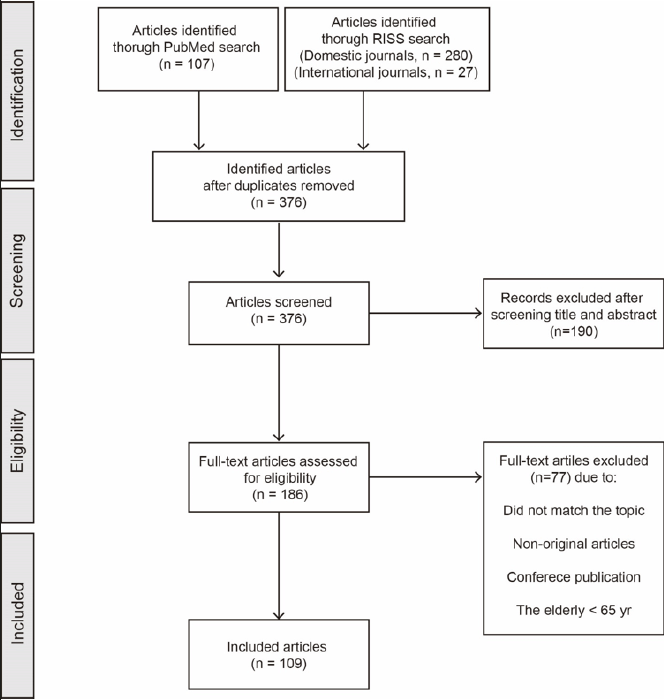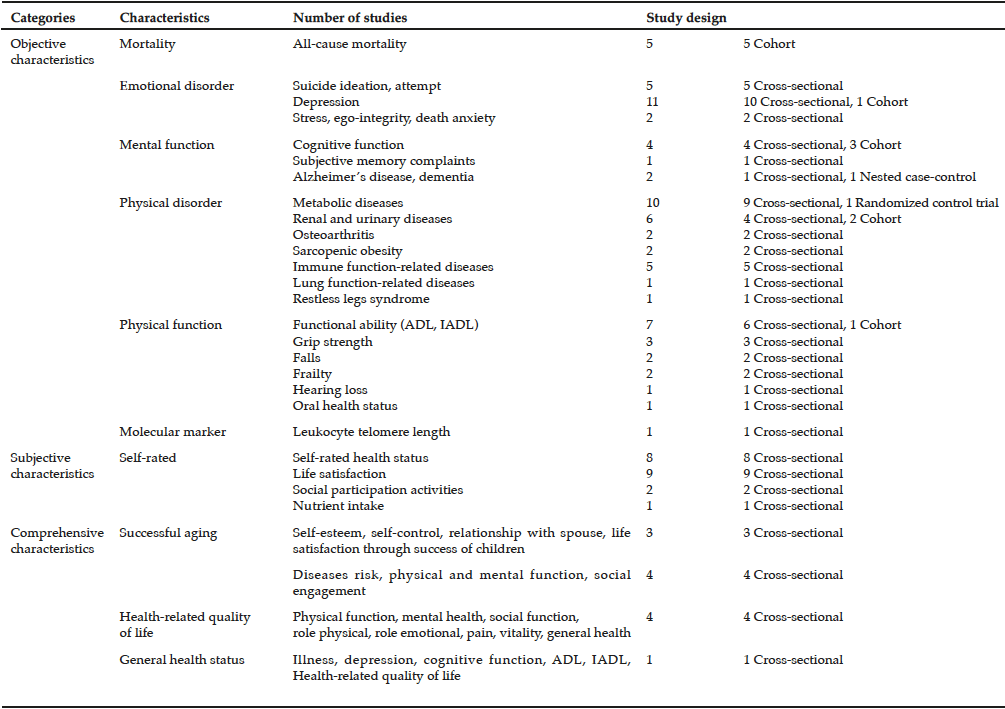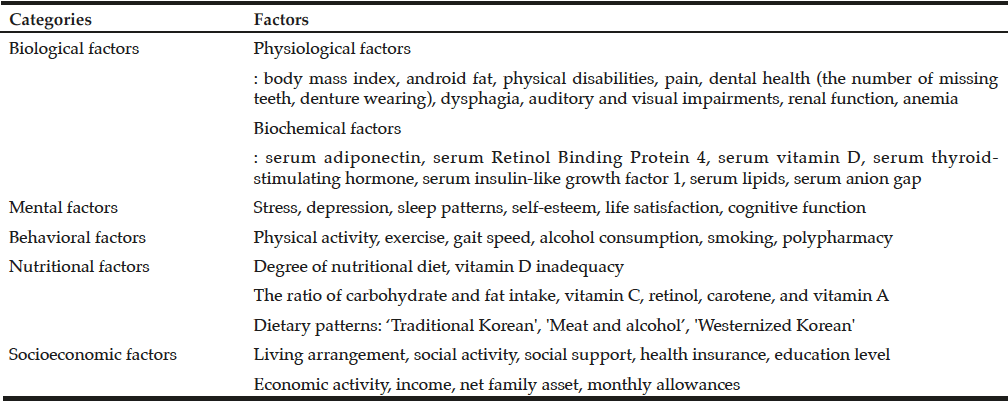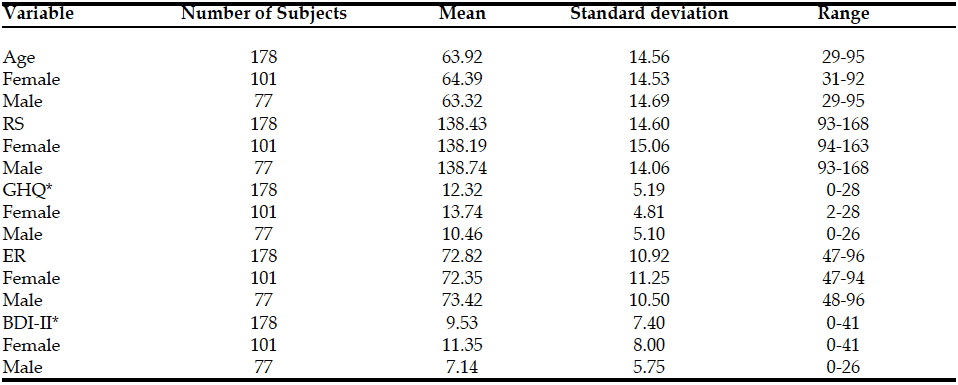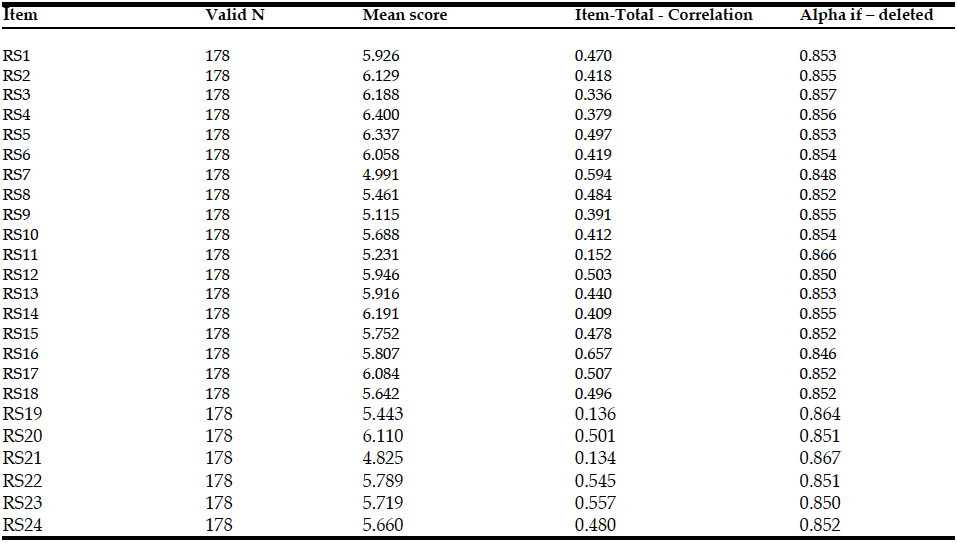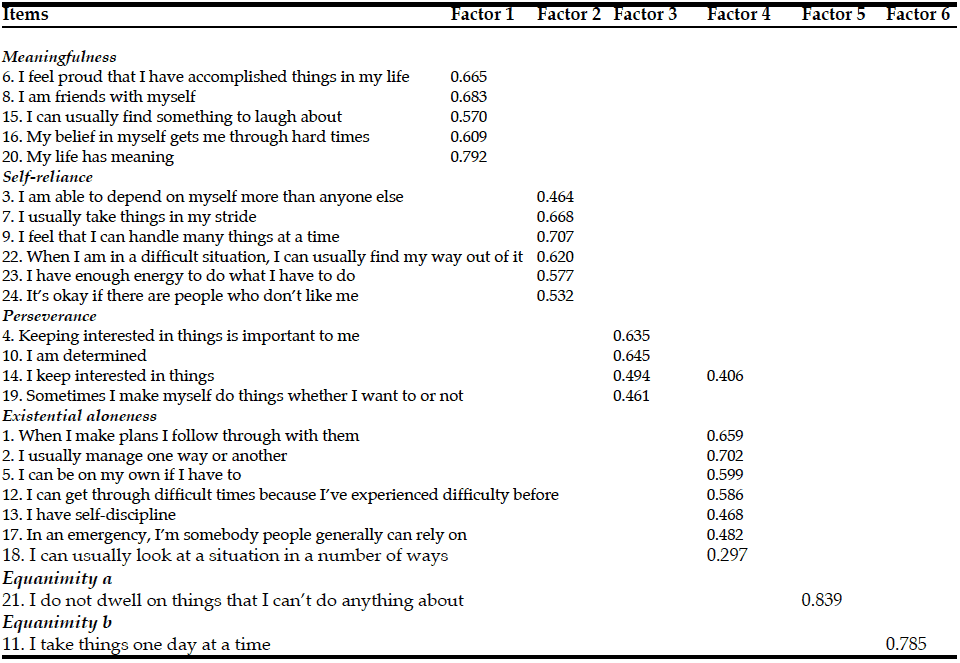J.H. Park, Y.J. Park
NutriEpigenomics Laboratory, Department of Nutritional Science and Food Management, College of Science and Industry Convergence, Ewha Womans University, Seoul, Republic of Korea
Corresponding Author: Yoon Jung Park, NutriEpigenomic Laboratory, Department of Nutritional Science and Food Management, Ewha Womans University, 52 Ewhayeodae-gil, Seodaemoon-gu, Seoul 03760, Korea, Rep. of. Telephone: 82-2-3277-6533, FAX: 82-2-3277-2862 E-mail: park.yoonjung@ewha.ac.kr
J Aging Res Clin Practice 2018;7:3-8
Published online February 15, 2018, http://dx.doi.org/10.14283/jarcp.2018.2
Abstract
An increasing number of researches on gerontology has emphasized an aging process without impairments of physical and/or cognitive function, alongside with an increase of life expectancy. However, studies to date on a healthy aging have suggested limited information on normal and usual aging in an inconsistent manner. Here, we review characteristics to define a healthy aging and, moreover, suggest effective elements to achieve the healthy aging through systematic review. Based on two databases including RISS and PUPMED, we collected original articles showing links between health-related traits and associated factors in Korean population aged 65 years or older. After screening the titles and abstracts, full texts of 186 articles were reviewed, and the remaining 109 papers meeting the inclusion criteria were analyzed to extract aging characteristics and factors of healthy aging. Here, we focus on two themes: 1) definition of a healthy aging and 2) effective determinants influencing the healthy aging. Our results suggest that a healthy aging is a multidisciplinary concept involving objective, subjective and comprehensive definitions. We classify the healthy aging-associated factors into physical, emotional, mental, social and economic domains, and identify that dietary patterns and nutrients among the multi-layer elements become good modifiable factor to achieve the healthy aging..
Keywords: Healthy aging, successful aging, midlife factors, Korean elderly.
Introduction
The progressive increase of life expectancy is a major epidemiologic issue we are facing. By the early 20th century, major causes of illness and death were infectious and parasitic diseases and, thus, a short life expectancy was accompanied by a low survival rate of children and the elderly who are easily infected from virus and bacteria (1). However, a dramatic increase of global life expectancy is being driven by the remarkable improvements of hygiene, nutrition and accessibility to medical care during the last century. According to the report of the World Health Organization, the global population of older adults aged 65 or older would be expected to increase from an estimated 524 million in 2010 to nearly 1.5 billion in 2050 (1). Alongside with the rapid aging, a transition of illness causing the world population to suffer has occurred from infectious diseases to non-communicable diseases such as obesity, diabetes, cardiovascular diseases and cancer. The high prevalence of chronic diseases raises the question whether the present population lives longer with maintaining their well-being status. A concept of well-being encompasses positive status of physical and emotional health, economic condition, social activity and life satisfaction (2). Thus, it is important to understand and strengthen well-being to provide a way for diseases prevention as well as comprehensive health promotion. However, the concept of well-being has a limitation to apply to the elderly specifically, due to the wide coverage of population. Thus, it becomes critical how to define a healthy aging in terms of well-controlled physical, mental and socioeconomic systems without illness in the elderly. To date, a term of successful aging has been widely used to define a healthy aging in a usual population. A model for the successful aging was proposed by Rowe and Kahn, for the first time, and this involves multidimensional domains which are similar elements of well-being (3). However, many studies have still offered inconsistent criteria to define an effective successful aging with diverse terminologies. Therefore, we aim to explore coherent characteristics organizing healthy and successful aging via a systematic review of clinical researches, particularly in Korean elderly. In addition, we investigate effective determinants contributing to the healthy aging at an individual level as well as social and national levels.
Methods
Search strategy
We searched articles on the Korean Research Information Service System (RISS) and the PubMed databases. We used search terms “elderly”, “aging”, “health” and “Korean” and searched articles published from 1995 to 2017. The search is processed by RISS as: “Korean” [All Fields] AND “elderly” [All Fields] AND “health” [All Fields] AND “aging” [All Fields]) and by PubMed as: (“Korean” [Title/Abstract] AND “elderly” [Title/Abstract] AND “Health” [Title/Abstract] AND “aging” [Title/Abstract]). In RISS database, domestic scientific journals and international journals were included and thesis, books and research reports were excluded. In PubMed database, every journal searched was included. Searching articles were conducted between January 5 and 17, 2017.
Study selection
Peer-reviewed journals conducted in the Korean elderly population aged 65 years or older were included. First, the titles and abstracts of the articles were screened according to inclusion and exclusion criteria as shown in Figure 1. Firstly, we excluded articles that were non-original articles, including review articles and conference publications, and were overlapped. Secondly, we excluded articles which did not match the research topic for healthy aging and the appropriate subjects such as participants who were non-Korean through reviewing titles and abstracts. Considering that the chronological age of 65 year is used to define elderly in Korea national reports such as Korea National Health and Nutrition Examination Survey and Dietary Reference Intakes for Koreans, we also excluded articles on the population under 65 years of age. After the screening, we reviewed the full-texts and extracted the finalized articles.
Data extraction
We extracted the following information from the included articles: (1) first author, (2) title, (3) published journal and year, (4) study design; (5) number of participants; (6) age of participants; (7) characteristics of aging outcomes; (8) and effective determinant influencing healthy aging (9). The extracted information was reviewed and categorized according to organizing criteria. Components of aging characteristics and factors affecting health status of the elderly from the included articles were categorized. Information regarding the Korean-specific aging was described with example articles in the text and discussion.
Results
Results of the literature search
Figure 1 shows the flow of article selection for systematic review. We searched initially four hundred fourteen articles in RISS (n = 307) and PUBMED (n = 107). The remained articles (n = 376) after removing duplicates (n = 38) were screened at titles and abstract levels. Full-texts of 186 articles were reviewed and 109 articles were included to extract data. The 109 articles comprised cross-sectional studies (n = 95), case-control studies (n = 0), nested case-control studies (n = 1), cohort (n = 12) and randomized control trials (n = 1). All the included researches were conducted in south Korea and every participant was the Korean elderly with age of 65 years or older.
Outcome characteristics to define aging in the Korean elderly
Few studies assess intervention or randomized control trial and, instead, cross-sectional and cohort. One study determined that the effect of exercise program on the improvement of health of the elderly through a randomized control. A variety of health characteristics to define aging were identified in the reviewed articles. The characteristics of health status of the elderly could be divided into objective and subjective criteria: the objective terms are defined by diagnosable characteristics such as mental and physical disorders and related-diseases, and the subjective characteristics are defined by self-reported ones such as perceived health and life satisfaction. The objective criteria could be classified into six subtypes; mortality, emotional disorders, mental functions, physical disorder, physical functions and molecular marker. Eighteen out of the 109 studies investigated emotional disorders including depression, suicide ideation or attempt, perceived stress and death anxiety. Ten studies investigated mental functions and related disorders including cognitive function, dementia, and Alzhimer’s disease. In relation to physical health, twenty-eight studies investigated physical diseases and the majority of the studies focused on metabolic diseases including obesity, sarcopenic obesity, glucose dysregulation and cardiovascular related-diseases as well as other physiological diseases including renal and pulmonary dysfunction, osteoarthritis, immune disorder and restless legs syndrome. Physical functions were investigated in sixteen studies in which six studies measured activities of daily living (ADL) and instrumental ADL (IADL), three studies assessed grip strength to evaluate functional ability of the elderly, and others investigated falls, frailty, hearing loss and oral health status to define physical functions. With regards to subjective criteria, self-reported characteristics were assessed by twenty studies. Eight studies evaluated self-rated health status which reflects simply an individual’s perception of general health status. Also, social participation activities and nutrient intakes were assessed through self-reporting scales by two and one studies, respectively.
In addition to the single elements in terms of objective and subjective criteria, twelves studies used comprehensive terms including ‘successful aging’, ‘health-related quality of life’ and ‘general health status’. Seven cross-sectional studies used the term ‘successful aging’ but the definitions could be divided into two concepts. A first concept of successful aging means psychological and social state by evaluating self-esteem, self-control, relationship with spouse and life satisfaction through success of children, which is suggested and defined by Kim and Shin (4). The other concept is based on the theory of human aging suggested by Rowe and Kahn, which encompasses diseases status, physical and mental functions and social activity (3). A term of ‘health-related quality of life’ contains physical function, mental health, emotional state and social participation were used in four cross-sectional literatures. A super-ordinate concept of ‘general health status’ embracing health-related quality of life and illness, geriatric depression, physical function was used in one article. These concepts are similar to the one of successful aging based on the Rowe and Kahn’s model.
Effective factors influencing healthy aging
Table 2 shows that healthy aging-associated factors are categorized into five; biological, mental, behavioral, nutritional and socioeconomic factors. Biological factors encompass physiological and biochemical factors. More specifically, physiological factors involve body composition, physical disabilities, pain, dental health including the number of missing teeth and denture wearing, dysphagia, auditory and visual impairments, renal function and anemia. These physiological factors are implicated to impact on comprehensive health status in the elderly as well as mortality (5-11). Biochemical factors are measurable in the blood and these consist of adiponectin, retinol binding protein (RBP) 4, vitamin D, thyroid-stimulating hormone (TSH), insulin-like growth factor (IGF) 1, insulin, lipids and serum anion gaps. The biochemical elements would be predictive factors of aging-related physical diseases. For instance, serum adiponectin, RBP4 and vitamin D levels are associated with prevalence of metabolic diseases (12-14). Serum TSH and cholesterol-related lipoprotein levels are risk factors of cognitive function (15) and sarcopenic obesity (16), respectively. Serum anion gap is a predictive factor of all-cause mortality (17). Factors categorized into mental health are stress, depression, sleep patterns, self-esteem, life satisfaction and cognitive function. These are associated with not only mental outcomes mentioned in the aging characteristics such as suicide ideation and memory capacity (18, 19) but also physical characteristics such as falls, frailty and urinary function (20-23). Behavioral factors reflecting individual life styles included physical activity, exercise, gait speed, alcohol consumption, smoking and polypharmacy, and were reported to be associated with the aging characteristics, mainly the prevalence of non-communicable diseases, physical function and emotional disorders and mortality (18, 24-28).
Associations between nutritional factors and healthy aging
In relation to nutritional factors, three cross-sectional studies provided that dietary intake and patterns, mainly affecting ratio of macro-nutrients, are associated with body composition and metabolic diseases in the aging characteristics. No, 2012, reported characteristics of healthy behaviors, particularly in dietary patterns of the Korean elderly by analyzing 2010 Korea National Health and Nutrition Examination Survey (KNHANES) (29). The Korean elderly highly consume carbohydrate and lower consumption of fat and vitamin C relative to the amount of daily nutritional allowance. When the population is classified into non-obese without metabolic syndrome (normal group), non-obese with metabolic syndrome, obese without metabolic syndrome and obese with metabolic syndrome, the obese groups exhibit a higher consumption of vitamin A, retinol and carotene, relative to the non-obese groups (29).
In addition, Oh et al. identified that dietary patterns in Korean elderly are differently associated with body composition changes, possibly affecting progression of non-communicable diseases (25). The elderly groups are classified into three groups according to their dietary patterns based on the consuming food groups; traditional Korean diet, meat and alcohol diet, and westernized Korean diet. Characteristics of the Korean traditional diet are high consumption of white rice and low consumption of meat, milk and dairy products, which may lead to low protein and calcium intakes. The meat and alcohol, and the westernized Korean groups fulfill their carbohydrate needs from other grains and flour-based foods such as noodle, dumpling and bread instead of white rice. The meat and alcohol diet group highly consumes meat and alcohol relative to other two groups and, thus, their intakes of protein and iron are also higher relative to other groups. Others excluding the traditional Korean diet group and the meat and alcohol group are assigned to the westernized Korean diet group. When comparing body compositions between the groups, the meat and alcohol group shows an increase of BMI and the westernized group shows an increase of Appendicular skeletal muscle / bodyweight (ASM/Wt). In other words, the Korean traditional diet has a lower ratio of muscle mass to bodyweight, relative to the westernized Korean diet. This probably leads to high risks against decline of physical function such as frailty, falls, ADL and instrumental ADL and, furthermore, age-related muscle wasting such as sarcopenia and sarcopenic obesity.
Regarding sarcopenic obesity, a cross-sectional study which was excluded due to the participants aged 60 or older reports that the prevalence of sarcopenic obesity is associated with consumption of energy and micronutrients in the Korean elderly (30). High intakes of carbohydrate in men and potassium in women decrease the likelihood of sarcopenic obesity in a gender-specific manner. Also, enough serum vitamin D levels decrease the prevalence of sarcopenic obesity both in men and women, but whether intake levels of vitamin D are also changed is unknown. This negative association between serum vitamin D levels and an onset of aging-related diseases was reported in another article showing links between deficiency of serum 25-hydroxyvitamin D (25-OHD) and stenosed coronary artery (31).
Discussion
This review suggests a comprehensive summary of evidence for the categorization of aging characteristics and probable factors in the Korean elderly. In our review of the 109 articles, characteristics to define an individual aging could be classified into objective traits such as diseases and functional declines and into subjective traits such as perceived health and life satisfaction. Only 9 studies provide multidimensional concepts to define healthy aging and, of the 9 studies, 4 articles use a concept of successful aging proposed by Rowe and Kahn, consisting of avoidance of diseases, maintenance of physical and cognitive function, and active social engagements (3). Moreover, the majority of studies conducted the survey through cross-sectional design while the studies based on the randomized control trial and cohorts were relatively scarce. Thus, multidisciplinary and prospective approaches to investigate causal relations between effective factors and healthy aging in Korean population more need to be considered in further studies.
Our findings provide classification of aging outcomes based on the domains of measurements into biological, mental, behavioral, nutritional and socioeconomic factors. Several determinants mutually influence in the included articles so that what was identified as a factor in some articles was assigned as an outcome in other researches. In many cases, physical elements such as functional disability and mental determinants such as geriatric depression and cognitive function affect each other (11, 21). Through the review regarding determinants to define a successful aging, we found the successful aging is significantly affected by gender and age in the Korean elderly (32). The female elderly has a lower probability to achieve successful aging, relative to male elderly, and the elderly older than 75 has a lower achievement than the elderly aged between 65 and 74. Given that South Korea shows the most rapid increase of aged population in the world, the negative effect of age on successful aging would be far greater in the following generation living in an aging society (1). Thus, we are facing an urgent need for a nation-wide effort to accomplish healthy aging through improving other modifiable determinants such as behavioral and socioeconomic supports. In this review, we suggest several nutritional determinants as modifiable elements influencing physical health such as body composition and onset of sarcopenic obesity. Therefore, based on this evidence, dietary intervention trials considering an excessive carbohydrate rate and/or a deficient vitamin D may improve the healthy aging in the Korean elderly.
In conclusion, we provide a step toward exploring a healthy aging in the Korean elderly. The healthy aging is a multidimensional concept embracing physical, mental and social domains. Physical function, social support, and behaviors including smoking and alcohol, and diet might contribute to the achievement of healthy aging. Further systematic review and meta-analysis in various populations following different ethnic as well as life styles and dietary patterns are needed to validate consistency of our findings and, moreover, further research on the prevention and/or intervention may help improve healthy aging in global population.
Funding: This study was supported by ILSI Korea.
Conflict of interest: Authors have no conflict of interest to disclose.
References
1. Organization WHO. Global health and aging. Geneva: World Health Organization 2011;
2. Diener E, Scollon CN and Lucas RE. The evolving concept of subjective well-being: The multifaceted nature of happiness. Journal 2009; 67-100.
3. Rowe JW and Kahn RL. Successful aging. Science 1997; 37: 433-40.
4. Kim MH and Shin KR. The Study on the Development of the “Successful Aging” Scale for Korean Elderly. J Korean Geriatr Soc 2005; 25: 35-52.
5. Han SS, Kim KW, Kim KI, et al. Lean mass index: a better predictor of mortality than body mass index in elderly Asians. J Am Geriatr Soc 2010; 58: 312-7.
6. Bang SM, Lee JO, Kim YJ, et al. Anemia and activities of daily living in the Korean urban elderly population: results from the Korean Longitudinal Study on Health and Aging (KLoSHA). Ann Hematol 2013; 92: 59-65.
7. Kim Y, Kwak Y and Kim JS. The association between suicide ideation and sensory impairment among elderly Koreans. Aging Ment Health 2015; 19: 658-65.
8. Han SY and Kim CS. Does denture-wearing status in edentulous South Korean elderly persons affect their nutritional intakes? Gerodontology 2016; 33: 169-76.
9. Yang EJ, Kim KW, Lim JY and Paik NJ. Relationship between dysphagia and mild cognitive impairment in a community-based elderly cohort: the Korean longitudinal study on health and aging. J Am Geriatr Soc 2014; 62: 40-6.
10. Chin HJ, Song YR, Lee JJ, et al. Moderately decreased renal function negatively affects the health-related quality of life among the elderly Korean population: a population-based study. Nephrol Dial Transplant 2008; 23: 2810-7.
11. Lee M. Relative effects of health and family factors on geriatric depression. The Korean Journal of Community Living Science 2011; 22: 623-635.
12. Choi SH, Ku EJ, Hong ES, et al. High serum adiponectin concentration and low body mass index are significantly associated with increased all-cause and cardiovascular mortality in an elderly cohort, “adiponectin paradox”: the Korean Longitudinal Study on Health and Aging (KLoSHA). Int J Cardiol 2015; 183: 91-7.
13. Lim S, Yoon JW, Choi SH, et al. Combined impact of adiponectin and retinol-binding protein 4 on metabolic syndrome in elderly people: the Korean Longitudinal Study on Health and Aging. Obesity (Silver Spring) 2010; 18: 826-32.
14. Lim S, Shin H, Kim MJ, et al. Vitamin D inadequacy is associated with significant coronary artery stenosis in a community-based elderly cohort: the Korean Longitudinal Study on Health and Aging. J Clin Endocrinol Metab 2012; 97: 169-78.
15. Moon JH, Park YJ, Kim TH, et al. Lower-but-normal serum TSH level is associated with the development or progression of cognitive impairment in elderly: Korean Longitudinal Study on Health and Aging (KLoSHA). J Clin Endocrinol Metab 2014; 99: 424-32.
16. Baek SJ, Nam GE, Han KD, et al. Sarcopenia and sarcopenic obesity and their association with dyslipidemia in Korean elderly men: the 2008-2010 Korea National Health and Nutrition Examination Survey. J Endocrinol Invest 2014; 37: 247-60.
17. Ahn SY, Ryu J, Baek SH, et al. Serum anion gap is predictive of mortality in an elderly population. Exp Gerontol 2014; 50: 122-7.
18. Ro J, Park J, Lee J and Jung H. Factors that affect suicidal attempt risk among korean elderly adults: a path analysis. J Prev Med Public Health 2015; 48: 28-37.
19. Ryu JM, Kim KW, Park JH, et al. Predictors for subjective memory complaints in the elderly: The results from Korean Longitudinal Study on Health and Aging (KLoSHA). Journal of Korean Neuropsychiatric Association 2007; 46: 560-565.
20. Yeom JH and Na HJ. Risk Factors of Falls among Korean Elderly J Korean Geriatr Soc 2012; 32: 577-592.
21. Ma SH, Jeung KY, Hong SH, et al. Correlation between frailty level and disability of the elderly and frailty related factors. Korean journal of family medicine 2009; 30: 588-597.
22. Lee YI, Kim JW, Bae SR, et al. Effect of urgency symptoms on the risk of depression in community-dwelling elderly men. Korean journal of urology 2013; 54: 762-766.
23. Park HK, Paick SH, Kim HG, et al. Effect of depression on the risk and severity of lower urinary tract symptoms in community-dwelling elderly Korean men. LUTS: Lower Urinary Tract Symptoms 2012; 4: 63-67.
24. Quan S, Jeong J-Y and Kim D-H. The relationship between smoking, Socioeconomic status and grip strength among community-dwelling elderly men in Korea: Hallym Aging Study. Epidemiology and health 2013; 35:
25. Oh C, No J-K and Kim H-S. Dietary pattern classifications with nutrient intake and body composition changes in Korean elderly. Nutrition research and practice 2014; 8: 192-197.
26. Park HY, Park JW, Song HJ, Sohn HS and Kwon JW. The Association between Polypharmacy and Dementia: A Nested Case-Control Study Based on a 12-Year Longitudinal Cohort Database in South Korea. PLoS One 2017; 12: e0169463.
27. Jeong HG, Kim TH, Lee JJ, et al. Impact of alcohol use on mortality in the elderly: results from the Korean Longitudinal Study on Health and Aging. Drug Alcohol Depend 2012; 121: 133-9.
28. Kim HJ, Park I, Lee HJ and Lee O. The reliability and validity of gait speed with different walking pace and distances against general health, physical function, and chronic disease in aged adults. J Exerc Nutrition Biochem 2016; 20: 46-50.
29. No JK. Evaluation of Exercise and Dietary Intake in the Korean Elder According to the Classification of Obesity and Metabolic Syndrome. The Korean Journal of Obesity 2012; 21: 236-244.
30. Hwang B, Lim JY, Lee J, et al. Prevalence rate and associated factors of sarcopenic obesity in korean elderly population. J Korean Med Sci 2012; 27: 748-55.
31. Lim S, Shin H, Kim MJ, et al. Vitamin D inadequacy is associated with significant coronary artery stenosis in a community-based elderly cohort: the Korean Longitudinal Study on Health and Aging. The Journal of Clinical Endocrinology & Metabolism 2012; 97: 169-178.
32. Han S and Yun S-N. Successful aging and the influencing factors in the Korean elderly: focused on family support. Journal of Korean Academy of Community Health Nursing 2015; 26: 372-379.

